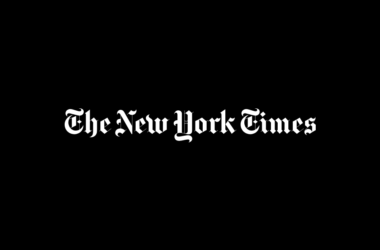With inflation falling, unemployment low and the Federal Reserve signaling it could soon begin cutting interest rates, forecasters are becoming increasingly optimistic that the U.S. economy could avoid a recession.
Wells Fargo last week became the latest big bank to predict that the economy will achieve a soft landing, gently slowing rather than screeching to a halt. The bank’s economists had been forecasting a recession since the middle of 2022.
Yet if forecasters were wrong when they predicted a recession last year, they could be wrong again, this time in the opposite direction. The risks that economists highlighted in 2023 haven’t gone away, and recent economic data, though still mostly positive, has suggested some cracks beneath the surface.
Indeed, on the same day that Wells Fargo reversed its recession call, its economists also published a report pointing to signs of weakness in the labor market. Hiring has slowed, they noted, and just a handful of industries account for much of the recent job gains. Layoffs remain low, but workers who do lose their jobs are having a harder time finding a new one.
“We’re not out of the woods yet,” said Sarah House, an author of the report. “We still think that recession risk is still elevated.”
Ms. House and other economists have stressed that there are good reasons for their recent optimism. The economy has weathered the rapid rise in interest rates much better than most forecasters expected. And the surprisingly brisk slowdown in inflation has given policymakers more leeway — if unemployment begins to rise, for example, the Fed could cut rates to try to prolong the recovery.
If a recession does arrive, economists say there are three main ways that could happen:
1. The Delayed Slowdown
The main reason that economists predicted a recession last year is that they expected the Fed to cause one.
Fed officials spent the last two years trying to rein in inflation by raising interest rates at the fastest pace in decades. The goal was to tamp down demand just enough to bring down inflation, but not so much that companies would begin widespread layoffs. Most forecasters — including many inside the central bank — thought that such a careful calibration would prove too tricky and that once consumers and businesses began to pull back, a recession was all but inevitable.
It is still possible that their analysis was right and that only the timing was wrong. It takes time for the effects of higher interest rates to flow through the economy, and there are reasons that process may be slower than usual this time.
Many companies, for example, refinanced their debt during the period of ultralow interest rates in 2020 and 2021; only when they need to refinance again will they feel the bite of higher borrowing costs. Many families were able to shrug off higher rates because they had built up savings or paid off debts earlier in the pandemic.
Those buffers are eroding, however. The extra savings are dwindling or already gone, according to most estimates, and credit card borrowing is setting records. Higher mortgage rates have slowed the housing market. Student loan payments, which were paused for years during the pandemic, have resumed. State and local governments are cutting their budgets as federal aid dries up and tax revenue falls.
“When you look at all the supports that consumers have had, a lot of those are fading,” said Dana M. Peterson, chief economist for the Conference Board.
The manufacturing and housing sectors have already experienced recessions, with output contracting, Ms. Peterson said, and business investment is lagging more broadly. Consumers are the final pillar holding up the recovery. If the job market weakens even a little, she added, “that might wake people up and get them to think, ‘Well, I may not get fired but I might get fired, and at least I’m not going to get that big bonus,’” and reduce their spending accordingly.
2. The Return of Inflation
The biggest reason economists have become more optimistic about the possibility of a soft landing is the rapid cooling of inflation. By some shorter-term measures, inflation is now barely above the Fed’s long-run target of 2 percent; prices for some physical goods, such as furniture and used cars, are actually falling.
If inflation is under control, that gives policymakers more room to maneuver, allowing them to cut interest rates if unemployment begins to rise, for example. Already, Fed officials have indicated they expect to begin cutting rates sometime this year to keep the recovery on track.
But if inflation picks up again, policymakers could find themselves in a tight spot, unable to cut rates if the economy loses momentum. Or worse, they could even be forced to consider raising rates again.
“Despite the strong demand, we’ve still had inflation coming down,” said Raghuram Rajan, an economist at the University of Chicago Booth School of Business who has held top positions at the International Monetary Fund and the Bank of India. “The question now is, going forward, are we going to be so lucky?”
Inflation fell in 2023 partly because the supply side of the economy improved significantly: Supply chains returned largely to normal after the disruptions caused by the pandemic. The economy also received an influx of workers as immigration rebounded and Americans returned to the job market. That meant companies could get the materials and labor they needed to meet demand without raising prices as much.
Few people expect a similar supply resurgence in 2024, however. That means that for inflation to keep falling, it may require a slowdown in demand. That could be especially true in the service sector, where prices tend to be more tightly tied to wages — and where wage growth has remained relatively strong because of the demand for workers.
Financial markets could also be making the Fed’s job more difficult. The stock and bond markets both rallied late last year, which could effectively cancel out some of the Fed’s efforts by making investors feel richer and allowing corporations to borrow more cheaply. That could help the economy in the short term, but force the Fed to act more aggressively, raising the risk that it will cause a recession down the road.
“If we don’t maintain sufficiently tight financial conditions, there is a risk that inflation will pick back up and reverse the progress we’ve made,” Lorie K. Logan, the president of the Federal Reserve Bank of Dallas, warned this month in a speech at an annual conference for economists in San Antonio. As a result, she said, the Fed should leave open the possibility of another increase in interest rates.
3. The Unwelcome Surprise
The economy caught some lucky breaks last year. China’s weak recovery helped keep commodity prices in check, which contributed to the slowdown in U.S. inflation. Congress avoided a government shutdown and resolved a debt-ceiling standoff with relatively little drama. The breakout of war in the Middle East had only a modest effect on global oil prices.
There is no guarantee that luck will continue in 2024. The widening war in the Middle East is disrupting shipping lanes in the Red Sea. Congress will face another government-funding deadline in March after passing a stopgap spending bill on Thursday. And new threats could emerge: a more deadly coronavirus strain, conflict in the Taiwan Strait, a crisis in some previously obscure corner of the financial system.
Any of those possibilities could upset the balance that the Fed is trying to strike by causing a spike in inflation or a collapse in demand — or both at once.
“That’s the thing that, if you’re a central banker, keeps you up at night,” said Karen Dynan, a Harvard economist and former official in the Treasury Department.
Although such risks always exist, the Fed has little margin for error. The economy has slowed significantly, leaving less of a buffer in the event of a further hit to growth. But with inflation still elevated — and memories of high inflation still fresh — the Fed could have a hard time ignoring even a temporary spike in prices.
“There’s room for a mistake on both sides that would end up creating job loss,” Ms. Dynan said. “The risks are more balanced, certainly, than they were a year ago, but I don’t think that’s providing that much more comfort to the decision makers.”
Audio produced by Patricia Sulbarán.



